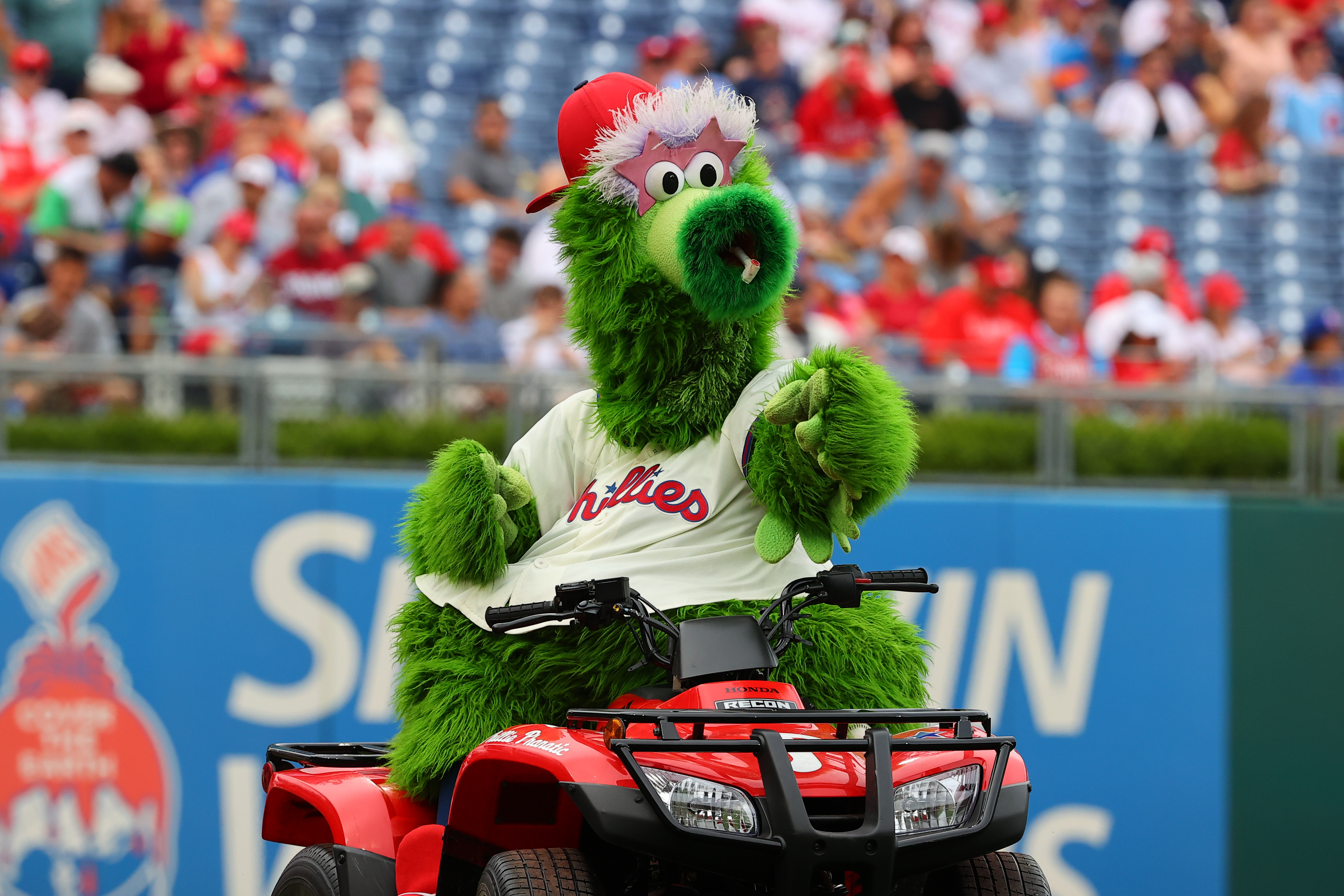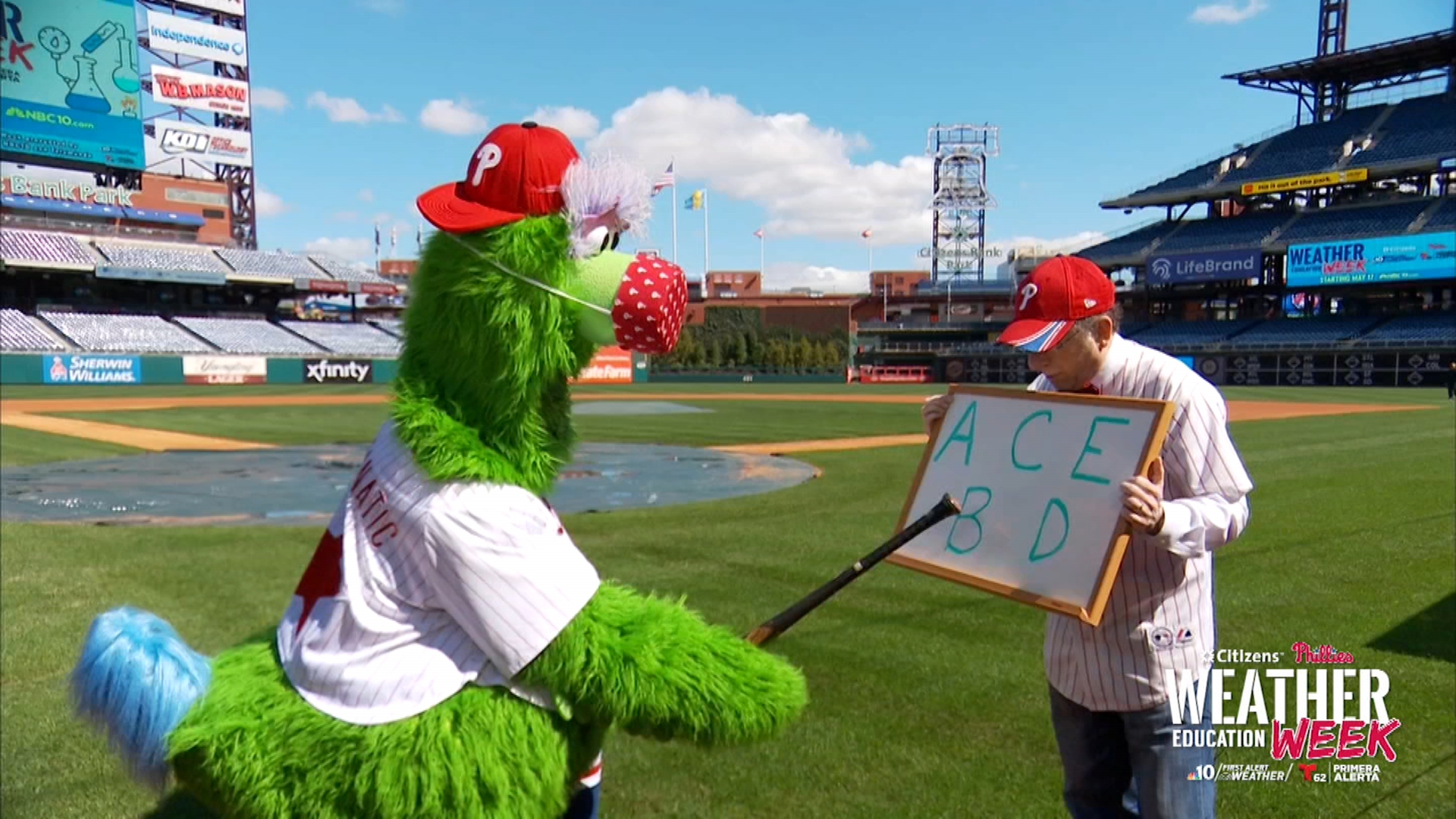What to Know
- A federal senior judge wrote in an Oct. 8 order that a settlement had been reached between the Phillies franchise and the Phanatic's original creator. The terms were not released.
- It is the apparent end to a legal battle that began in 2019 over a copyright dispute and licensing issue.
- A federal judge had previously decided that creators of the Phillie Phanatic had demonstrated the mascot had been registered as an artistic sculpture under copyright law.
A yearslong court fight over the future of the Phillie Phanatic is all but over, according to an Oct. 8 order that says a settlement has been reached between the baseball franchise and the original creator of the mascot.
A federal judge noted on Friday that the Phillies and the design firm Harrison/Erickson had reached a settlement and had 30 days to finalize the agreement before the lawsuit would be officially ended.
Get Philly local news, weather forecasts, sports and entertainment stories to your inbox. Sign up for NBC Philadelphia newsletters.
The legal battle broke out in 2019 as issues over the copyright claim and licensing renewal for the Phanatic led Bonnie Erickson, the Phanatic's original designer, to sue the Phillies.
Details of the settlement will not be publicly known until the 30-day deadline for any final stipulations is up next month, according to court documents filed with the Southern District of New York. That's where the lawsuit was originally filed and has been heard by a federal judge.
The Phillies had been allowed to continue using the Phanatic at its games and promotional events as the lawsuit played out thanks, in part, to a redesign of the mascot's looks that was unveiled last year.
In a 91-page decision on Aug. 10, U.S. Magistrate Judge Sarah Netburn in Manhattan decided that changes by the Philadelphia Phillies to the Phillie Phanatic mascot in early 2020 were sufficient to allow its continued use by the club. At the same time, she decided that creators of the Phillie Phanatic had demonstrated the mascot had been registered as an artistic sculpture under copyright law.
Her ruling appeared to be a half-win for both sides, but the tiebreaker for Phillies fans is that the Phanatic was allowed to keep showing up for work at the ballpark in South Philadelphia.
Spokespeople for the Phillies and Harrison/Erickson both declined Monday to comment on the settlement.
The Phillies unveiled the redesign of the green mascot in February 2020, a new look featuring flightless feathers rather than fur-colored arms, stars outlining the eyes, a larger posterior and a powder blue tail, blue socks with red shoes, plus a set of scales under the arms.
Netburn ruled that the Phillies franchise dodged a bullet, for now, when it unveiled a "new look" Phanatic in February 2020. The Phanatic now features feathers instead of its original fur, stars around its eyes, scales under its arms and a larger backside and tail.
Fans weren't exactly thrilled with the changes when they were first shown publicly. Still, the changes apparently saved the Phanatic.
Lawyers for the original creator of the now 37-year-old half-muppet, half-mythical creature said in a statement in August that they would continue to fight the Philadelphia Phillies baseball franchise over copyright issues related to the Phanatic's ownership.
"Our clients are gratified that the decision confirmed the undeniable truth: that they alone created and originally owned the Phillie Phanatic—baseball’s most famous and enduring mascot who is enshrined in the Baseball Hall of Fame in Cooperstown," lawyers for Bonnie Erickson and Wayde Harrison said. "At the same time, we disagree with that part of the decision which found that very minor changes to the Phanatic made by the Phillies (characterized even by the judge as 'no great strokes of brilliance') were sufficient to create a 2.0 derivative Phanatic that the Phillies can use (but with significant limitations) going forward. We maintain that none of the trivial changes made by The Phillies — which debuted four months before their rights in the original Phanatic expired — are original artistic expression, and do not individually or collectively constitute a copyrightable derivative work."
Netburn cited a 1991 U.S. Supreme Court decision, Feist Publications Inc. v. Rural Telephone Service Company Inc., in determining that the new-look Phanatic was different enough from the original version created by Erickson in the early 1980s to allow the Phillies to continue its use.
“To be sure, the changes to the structural shape of the Phanatic are no great strokes of brilliance," she wrote, "but as the Supreme Court has already noted, a compilation of minimally creative elements, ‘no matter how crude, humble or obvious,’ can render a work a derivative.”
Lawyers for Harrison and Erickson said in a statement at the time that “if left uncorrected, this low bar for a derivative work will thwart the very purpose and intent of the copyright termination provisions established by Congress to fairly compensate original creators for their works 35 years after they have licensed or granted rights in their creations, as Bonnie and Wayde did in 1984. The fight of the original creators for their just due will continue.”
After Netburn's August ruling, a senior federal judge in the Southern District of New York took a look at the case. It's that judge, U.S District Judge Victor Marrero, who issued the Oct. 8 order noting the settlement and 30-day window.
"Magistrate Judge Netburn, to whom this case was referred for a report and recommendation on the various summary judgment motions and a settlement conference, having informed the Court that the parties had reached an agreement in principle to settle this action without further litigation, it is hereby ordered, that this action be conditionally discontinued without prejudice and without costs," Marrero wrote. "Within 30 days of the date of this Order, the parties may submit to the Court their own Stipulation of Dismissal for the Court to So Order."



